Mount Fuji 2025: How to Climb Japan's Famous Mountain Safely

This guide introduces the main hiking trails on Mount Fuji with information on necessary equipment, mountain huts, climbing season, weather, and other tips.
Climbing Mt. Fuji, the Highest Mountain in Japan
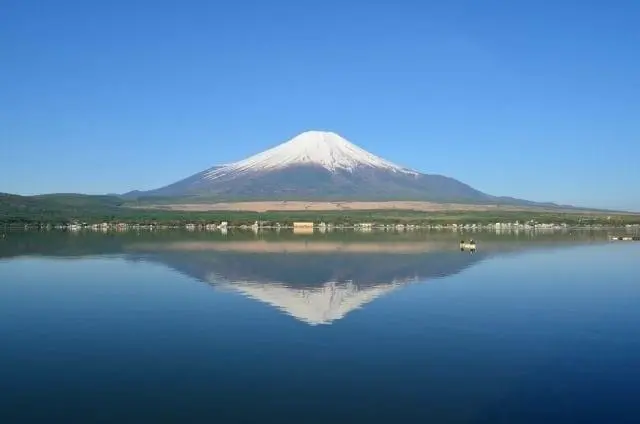
Mount Fuji is a Japanese icon, rising to an altitude of 3,776 meters (12,388 feet). It is the tallest mountain in Japan, and gathers twenty to thirty thousand climbers every year.
From the trailhead, the climb takes about six to seven hours to the summit. There are mountain huts where you can rest along the well-maintained trail, so Mt. Fuji is fit for intermediate-level climbers.
For well-prepared climbers with experience, the climb should take one to two days. Beginners should be well aware of the various risks. Accidents and health problems may occur if you try to climb Mt. Fuji casually. These difficulties will also vary depending on the trail and the timing.
The most popular hiking trail on Mount Fuji is the Yoshida Trail, which requires a reservation through the official Mount Fuji climbing website (available in several languages).
Please also note that a 4,000 yen fee is required to access the hiking trails in Mount Fuji.
If you are interested in climbing Mt. Fuji, please be aware of the difficulties as well as the rules that must be followed. This article will detail the climbing season, recommended trails, and necessary equipment.
Mt. Fuji Climbing Guide
1. Mount Fuji Climbing Season
2. Mount Fuji Hiking Trails
3. A Recommended Itinerary for Beginners
4. Mt. Fuji Guide and Tours
5. Equipment Necessary for Climbing Mt. Fuji
6. Weather Conditions at Mt. Fuji
7. How to Climb Mt. Fuji Safely
8. Climbing Rules and Manners
9. Access to Mt. Fuji's Trailheads
10. Activities and Tours near Mt. Fuji for Before or After your Climb
Mount Fuji Climbing Season: July 1 - September 10
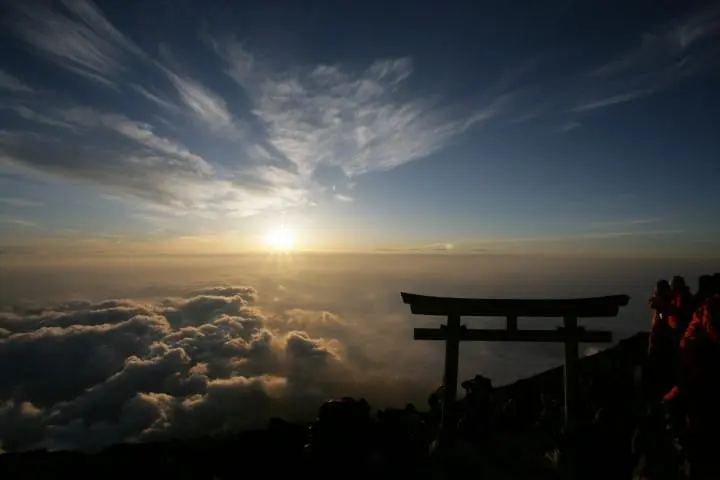
There are timely restrictions concerning climbing Mt. Fuji. The climbing season starts early July and ends early September. Aside from this timeframe, the mountain is closed due to safety reasons.
During the closed period, the temperature often drops below zero degrees Celsius. The mountain huts and toilets along the trail will also likely be closed. There will be no other climbers and rescue missions will be difficult. For all of these reasons, it would be wise not to climb during the closed season.
Please also note that the climbing season differs depending on the trail. Normally, the Yoshida Trail opens on July 1 and closes on September 10. The Subashiri, Gotemba, and Fujinomiya Trails also open around July 10 and close around September 10.
A 4,000 yen admission fee is required to access the hiking trails on Mount Fuji.
Try to Avoid Climbing in August and on Weekends
After Mt. Fuji opens its hiking trails on July 1, the number of climbers gradually increases. the trails will generally be very crowded in mid-August.
Most weekends during the climbing season will also be very busy, as most Japanese climbers tend to make use of their days off. If you prefer to climb under less-crowded conditions, try to schedule your visit to Mt. Fuji on weekdays.
Mount Fuji Hiking Trails
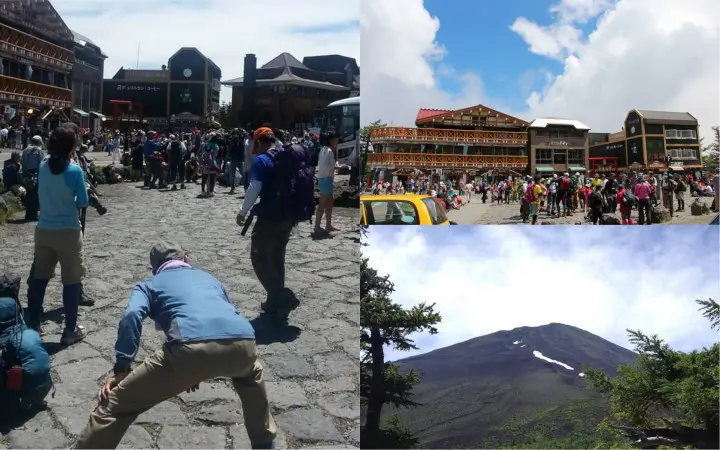
There are various trails leading up to Mt. Fuji. As the mountain spans between Yamanashi and Shizuoka Prefectures, there are trailheads on both sides. The access differs depending on the trailhead.
Following you can find a list of trails leading up to the summit. Please note that the time is a rough estimate. Beginners should add ten to twenty percent extra time to this estimate.
Though it is possible to climb Mt. Fuji in one day, it will require a tight schedule and a lot of strength. If you are a beginner, it is recommended to stay somewhere along the trail for one night, no matter which trail you choose.
The Yoshida Trail
This is the most popular trail and it's easy to climb. There are many huts along the route, making it perfect for beginners. Please be aware that this route will be crowded during high season, and the arrival at the summit may be delayed.
Please be aware that accessing the Yoshida Trail on Mount Fuji requires a reservation through the official Mount Fuji climbing website.
Ascent: About six hours.
Descent: About three-and-a-half hours.
Start Point: Fuji Subaru Line Fifth Station
The Fujinomiya Trail
The second most popular trail after Yoshida, as this is the shortest route, with less climbing time compared to other trails. Please note that note the trail is steep, so it will require a lot of strength.
Ascent: About five-and-a-half hours.
Descent: About four hours.
Start Point: Fujinomiya Trailhead Fifth Station
The Subashiri Trail
A less popular trail compared to Yoshida and Fujinomiya but not so crowded as a result. The trail goes through a verdant area, so it is recommended for climbers who also wish to see alpine plants during their climb. Subashiri is famous for its descent route. A steep area called "Sunabashiri" (sand running), where the climbers can run down a route covered in gravel is especially popular.
If you choose this trail, be careful not to fall down on your way back.
Ascent: About seven hours.
Descent: About three-and-a-half hours.
Start Point: Subashiri Trailhead Fifth Station
The Gotemba Trail
A route that will take long hours to climb. The incline is gentle, so the risk of altitude sickness is comparably low. Just like Subashiri, the descent route is full of gravel-covered areas, where the climbers can try "sand running."
Ascent: About eight hours.
Descent: About four-and-a-half hours.
Start: Gotemba Trailhead Fifth Station
The Degree of Congestion of Each Trail
The Yoshida and Fujinomiya trails tend to be crowded, especially at night when the climbers try to view the goraiko (*1) in the morning.
The Subashiri (before it merges with the Yoshida) and the Gotemba trail are less crowded than the Yoshida and the Fujinomiya trail, so please choose depending on your preference.
*1 Goraiko: Sunrise viewed from the mountain. One of the highlights of climbing Mt. Fuji.
A Recommended Itinerary for Beginners
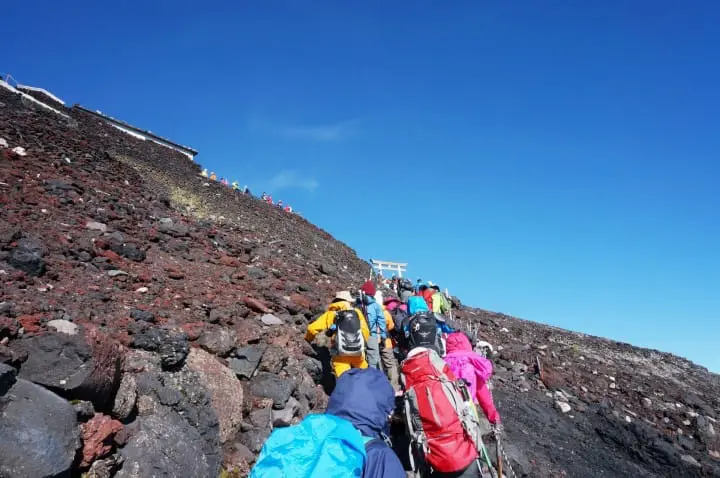
Beginners should choose a relatively crowded trail, as it would be easy to ask for help.
When planning on climbing Mt.Fuji, beginners should keep the following three things in mind.
1. Allow some latitude.
2. Choose a relatively crowded trail.
3. Enjoy the climb.
The following plan is based on the points mentioned above. The time required is a rough estimate. It is subject to change, depending on the climbers' experience.
A One-Night Stay Model Plan to View the Goraiko
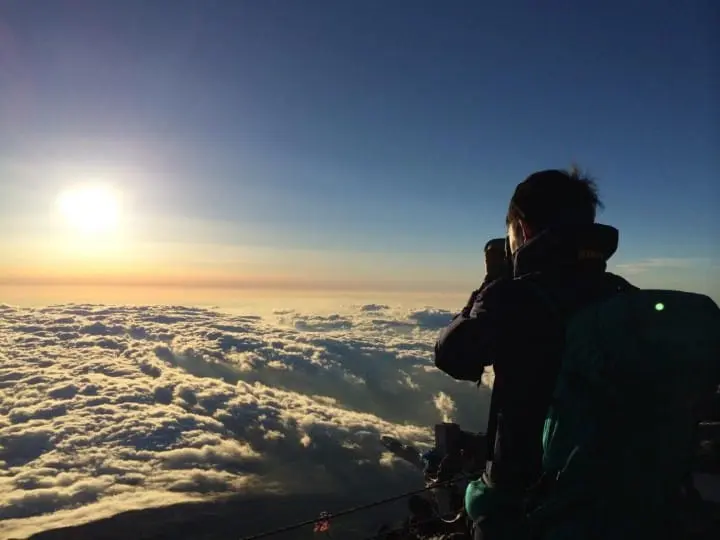
Start of the Climb: Noon
Required Time: About 24 hours. (Including one night stay, with eight hours of sleep.)
Climbing Hours: About eight hours for the ascent and four hours for the descent.
Trailhead: Fuji Subaru Line Fifth Station (Yoshida Trail)
First Day at Noon (Around 11:00 - 12:00) - Departing from Fuji Subaru Line Fifth Station
This plan will take the Yoshida Trail, used by nearly half the Mt. Fuji climbers. Although the incline is steeper than the Gotemba Trail, Yoshida is more crowded, so in case of trouble, you will be able to ask the fellow climbers for help.
It also offers easy access to the trailhead from Fuji Subaru Line Fifth Station. There are mountain huts and kiosks on the ascent trail, which can be helpful for the beginner climbers. Start your climb after lunch at the trailhead.
First Day at the Afternoon (Around 15:00 - 16:00) - Arriving at the Mountain Hut
After a three to four hours climb, you will reach the seventh or eighth station. After the long climb, you will be having a rest period at the mountain hut. Please note that a reservations must be made in advance.
First Day at the Evening (Around 16:00 - 20:00) - Rest and Dinner
At the hut, make sure to recover from the climb and get accustomed to the high altitude. Enjoy the sunset from Mt. Fuji. Bedtime should be early, in order to view the sunrise in the morning.
Dinner will be around 19:00 and bedtime should be at 20:00, at the latest. Dinnertime will differ according to the hut. Climbers arriving late at the hut may miss out on dinner, so check the meal hours when making reservations.
First Day at Night (Around 20:00 - 4:30) - Sleep and Recover
Sunrise will be around 5:00. If you feel strong enough, wake up at midnight and head for the summit. If not, get some sleep and watch the goraiko from the hut. The climb to the summit will take three to four hours.
Second Day in the Early Morning (Around 4:30 - 5:30) - Watch the Goraiko
Watch the goraiko from the hut and feel its mystic energy.
Second Day in the Morning (Around 6:00 - 10:00) - Continue Towards the Summit
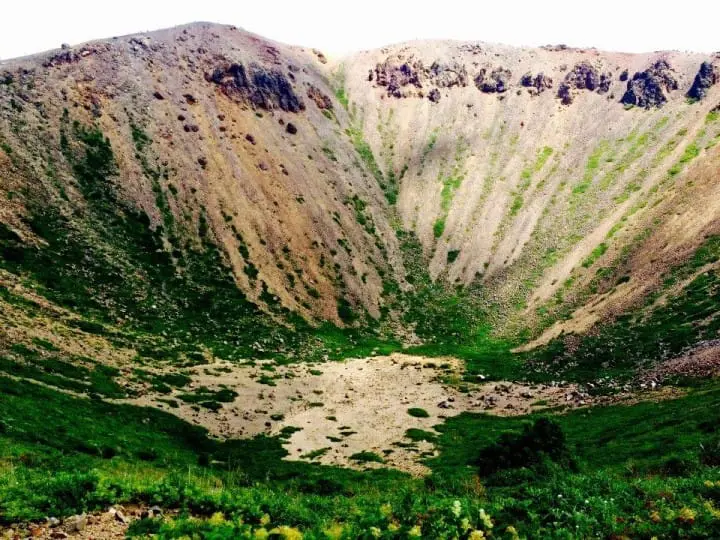
Ohachi meguri, for the climbers who still have their strength after reaching the summit.
The climb to the summit from the seventh or eighth station should take about four hours. Climbers who still feel strong enough should try what is known as ohachi meguri, a walk around the crater rim of Mt. Fuji, at the summit. This is a staple activity for climbers who want to feel the dynamic atmosphere of Mt. Fuji.
Second Day at Noon (Around 10:00 - 14:00) - Descent
After enjoying the scenery at the summit, it's time to descend, which should take about three to four hours. Although it will be faster than the ascent, the burden on the knees will be greater, so be careful not to fall and hurt yourself.
Mt. Fuji Guide and Tours
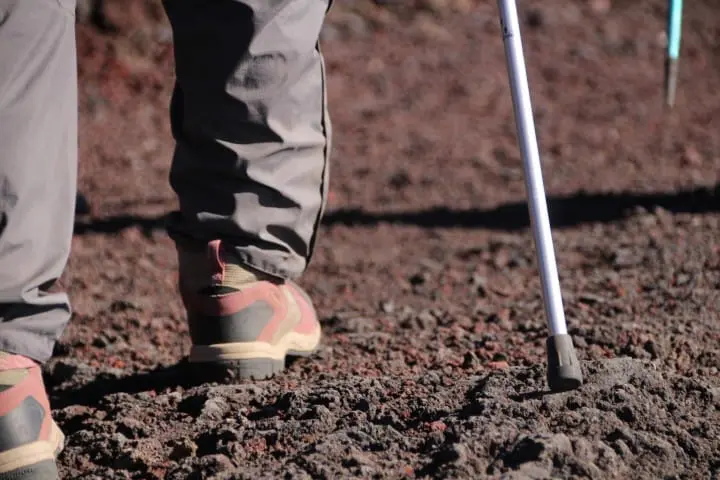
A guide might lessen the anxiety of climbing alone.
With careful preparation, even beginner climbers can enjoy Mt. Fuji. If you hope to avoid any possible trouble or learn more about Mt. Fuji while you climbing it, joining a guided tour might be a good idea.
Necessary Equipment for Climbing Mount Fuji
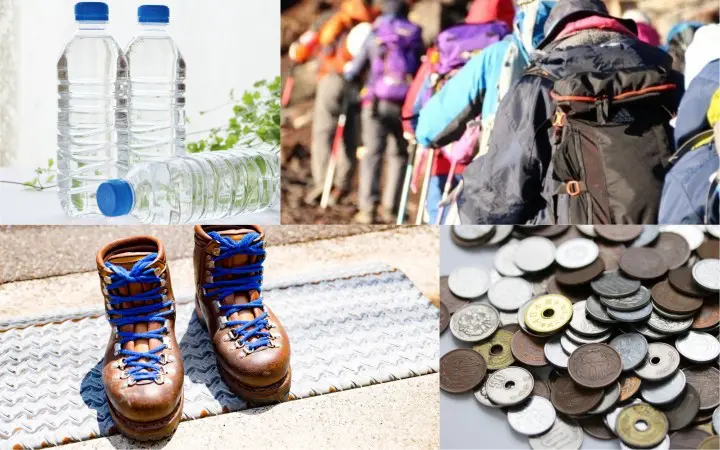
The following is a list of necessary items for the climb.
Clothing
| Boots | The trails at Mt. Fuji are well-maintained, but the long trek will be a great burden on the legs. Choose boots that will protect your feet. They should not be too tight and ideally, the boots should be waterproof. |
| Rainwear | The weather changes suddenly in the mountains, so bring rainwear, even if it's a sunny day. Make sure to choose the right size to accommodate multiple layers of clothing. |
| Hat or Bandanna | The summer sun in Japan is harsh and can cause heat stroke. Make sure to wear a wide-brimmed hat or a bandanna. |
| Gloves | The trails of Mt. Fuji are uneven and gloves will be necessary to prevent injuries. They will also protect the hands from the cold the further you get to the summit. |
| Winter Clothing | Although the climbing season is in summer, the temperature at the summit is only about five degrees Celsius. Climbers should dress accordingly to this climate. |
| Underwear | Perspiration will lower your body temperature while you are resting. Make sure to bring some extra underwear to change into. |
| Pants | Cotton clothing such as jeans lack elasticity and take time to dry. Climbers should wear mountaineering or trekking pants. |
Gears
| Headlight | To view the goraiko at the summit, climbers will have to trek in the dark. Also, the climb may not proceed as planned, so it would be wise to bring lights with you. A headlight would be best, as a flashlight has to be held by hand. |
| Backpack | At some point, climbers may have to use their hands along the trail. It would be wise to choose a backpack, which allows the use of both hands. A thirty liter-sized bag should be big enough. |
| Money | Climbers should bring some money with them, ranging from a few thousand to 10,000 yen. It is recommended to bring banknotes as well as coins, for occasions such as the following: Access Fee: 1,000 yen (*2) Toilet Fee: 100 to 300 yen. This will be required at the mountain huts. Food and Drink: There will be kiosks at the hut. Please note that the price will rise close to the summit. For instance, a 100 yen beverage will cost about 500 yen at the top. |
*2 Climbers will be asked to pay an access fee (a donation to the Fujisan Conservation Fund) at Mt. Fuji. The money will be used to maintain the safety of the climbers and preserving the environment. The fee will be collected at the General Information Center (Fuji Subaru Line Fifth Stage) or Safety Guidance Center (Yoshida Trail Sixth Stage).
Food and Beverage
| Water | To keep yourself hydrated during the climb, you should carry one to two liters of water in a canteen or a PET bottle. The water sold at the kiosks may cost up to 500 yen, depending on where you buy it. |
| Provisions | Bring snacks with high sugar content, such as chocolate or candy, as this will help you to recover from fatigue. |
| Toilet Paper | There are toilets equipped with paper along the trail, but it may run out due to the number of climbers. It would be safe to have some paper with you, just in case. |
Other Items
| Map | This is a necessary item to check the route, and locations of huts and toilets along the trail. |
| Sunscreen | A must-carry item for those who want to avoid sunburn, as the climbers will be exposed to the sun for long hours. |
| Coin Purse | Keep some coins ready, separately from a wallet in order to use at toilets or to buy drinks and snacks. |
| Wet Wipes | As drinking water is precious in the mountains, this item will be useful when wiping off dirt. |
| Sunglasses | To protect the eyes as ultraviolet rays will become stronger with altitude. |
| Alpenstock | This item will make the trek easier. |
| Sleeping Bag Liner | An item to improve the thermal insulation of the rental sleeping bags at the hut. It will also work as an extra layer for sleeping bags that may be well-used. |
| Portable Oxygen | This will come in handy in case of altitude sickness. |
| Earplugs | In case other climbers snore at night. |
Yamarent and Soranoshita both offer a rental service of mountain gears. Their websites are available in Japanese, English, and Chinese.
Weather Conditions on Mt. Fuji
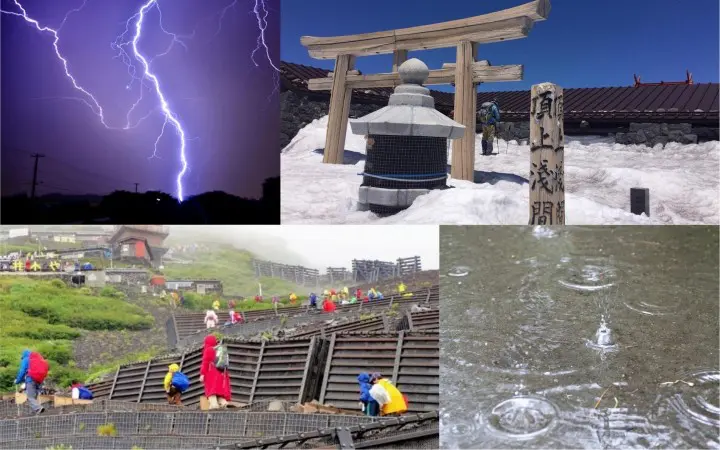
The temperature can change drastically at Mt. Fuji. Thunder and heavy winds will often occur. * These photographs are only for illustrative purposes.
The weather at Mt. Fuji changes drastically in a short period. Check the weather forecasts before the climb and pack rainwear as well as thermal wear, even if the day is clear. In case of the weather changing for the worse during the climb, you might also want to think about descending.
Mt. Fuji Climbing Official Site offers the latest disaster information, so make sure to check the site before the climb.
Temperature
At Mt. Fuji, the temperature drops about 0.6 degrees Celsius every 100 meters, resulting in a difference of twenty degrees Celsius between the summit and the foothills. The temperature will drop further at night and in the early morning.
At the time of the goraiko, around 5:00, the temperature at the summit sometimes drops to zero degrees Celsius. To avoid hypothermia, climbers should dress accordingly.
Thunderstorm
Thunderstorms often occur at Mt. Fuji. When the weather deteriorates and you see dark clouds alongside the rumbling sounds of thunder, head for the nearest hut.
Heavy Wind
You cant protect yourself from the strong winds blowing at Mt. Fuji. Climbers may fall down if the footing is bad, and hypothermia may occur as the body temperature drops. Evacuate to the nearest hut and if you do not feel strong enough think about descending.
How to Climb Mt. Fuji Safely
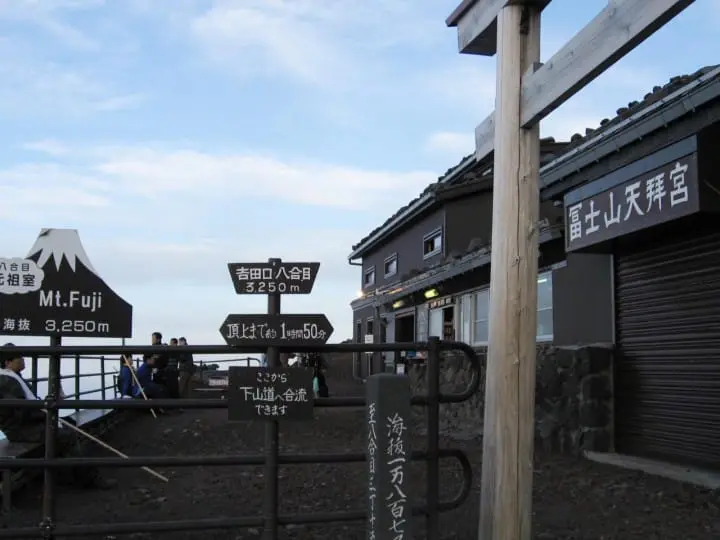
Money will be needed for the services at the mountain huts.
Mountain Huts
There are mountain huts along the trails of Mt. Fuji. Climbers should use them appropriately to rest and recharge. Please keep in mind that the huts are simple lodging houses and not hotels. Climbers will have to bring most necessary items by themselves.
The huts will be crowded during high season, so it would be safe to make reservations. The fare for an overnight stay without a meal is 5,000 yen and up, and 7,000 to 10,000 yen including two meals. Most huts do not accept credit cards, so payments will have to be in cash.
Toilets
All the toilets along the trail collect a fee ranging from 100 to 300 yen, so it would be best to have some coins ready. As the toilets tend to be crowded, some climbers refrain from using it. Some even stop drinking water. It is important to keep yourself hydrated, to prevent illness such as altitude sickness.
A portable toilet may come in handy in case of an emergency. Please note that the toilets at the summit might be especially crowded at the time of the goraiko, around 5:00.
Altitude Sickness
At an altitude of 2,500 meters or more, various symptoms might occur due to the lack of oxygen. If you have a headache or feel nauseated, do not overreach. You might want to think about descending.
To avoid altitude sickness, trek at your own pace and accustom yourself gradually to the high altitude environment. Breathing will become shallow with fatigue, so keep in mind to take a deep breath. Your clothing should not be too tight, to help with the breathing.
Another way to avoid sickness is to keep yourself hydrated. Avoid alcohol and get a good night's sleep before the climb.
Aid Stations
In case of injury or illness, make a call, or visit one of the aid stations listed below. If you're not sure about the location or have trouble communicating, ask the mountain hut staff for help.
Mt. Fuji Fifth Stage Aid Station (A nurse is stationed.)
Location: Inside the Mt. Fuji Fifth Stage Information Center
GoogleMap
Open: From July 1 to September 11
Station Hours: 8:00 - 20:00
Mt. Fuji Seventh Stage Aid Station (A doctor is stationed.)
Location: Near Kamaiwa-kan
GoogleMap
Open: From July 14 to 16 and from July 21 to August 26
Station Hours: Open 24 hours a day.
Mt. Fuji Eighth Stage Aid Station (A doctor is stationed.)
Location: Near Taishi-kan
GoogleMap
Open: From July 14 to 16 and from July 20 to August 27
Station Hours: Open 24 hours a day.
Emergency Contacts
If you are too weak to descend or wandered off the trail, call one of the numbers listed below. In Japan, dialing the number "110" will connect you to the police and "119" to the fire station.
Yoshida Trail
Mt. Fuji Fifth Stage Information Center
Telephone: 0555-72-1477 or 080-2279-3951
Subashiri Trail and Gotemba Trail
Gotemba Police Station
Telephone: 0550-84-0110
Gotemba City and Oyamacho Fire Station
Telephone: 0550-83-0119
Fujinomiya Trail
Fujinomiya Police Station
Telephone: 0544-23-0110
Fujinomiya Trail Police Box (Inside Mt. Fuji General Information Center)
Telephone: 090-2182-2239
Fujinomiya City Fire Station
Telephone: 0544-22-1198
Mount Fuji Climbing Rules and Manners
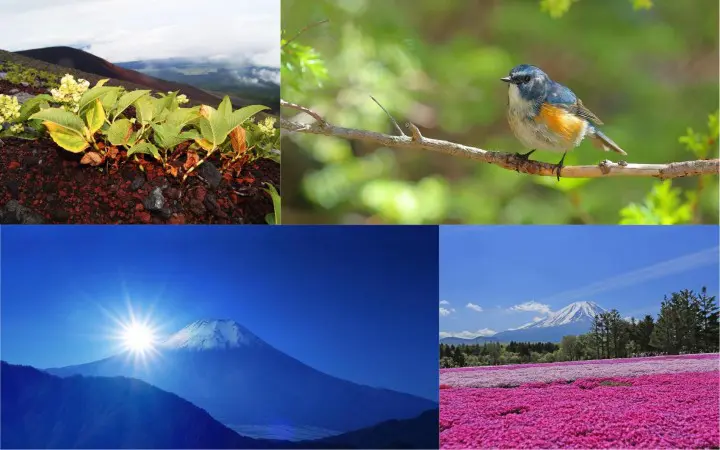
At Mt. Fuji, please obey by the following six rules and manners:
1. Do not vandalize the natural surroundings or the public facilities.
2. Take home your trash.
3. Let other climbers pass first.
4. Do not take pebbles home.
5. Graffiti is strictly prohibited.
6. Do not build tents or campfires.
Access to Mt. Fuji's Trailheads
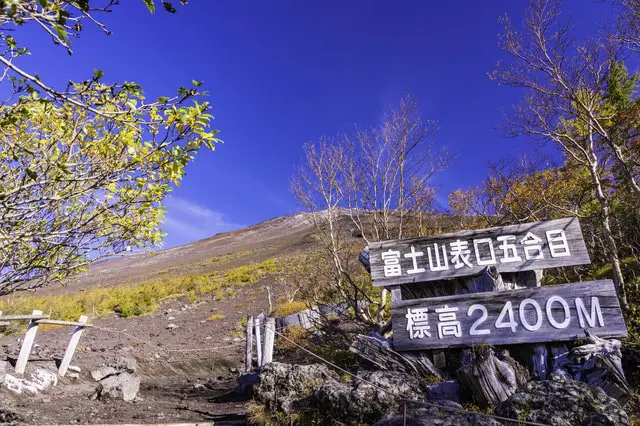
Photo by Pixta
Visitors can either reach the trailheads by express bus or go to the nearest station, and ride a climbers' bus heading to the trailhead from there. Please be aware that the access to each trailhead is different. The details are as follows:
Express Bus
An express bus from Shinjuku, Tokyo, leaves for the Yoshida Trailhead. The ride takes about two-and-a-half hours, and the fare is 2,700 yen. Please check the Fuji Kyuko Bus Official Site.
Another express bus, headed for Kawaguchiko Station, leaves from both Haneda Airport and Kansai Airport. If you plan to head for Mt. Fuji directly from the airport, ride this bus, and transfer to the climbers' bus from Kawaguchiko.
The express bus offers convenient access to the trailhead, as it is easy to make reservations, and there will be no need to transfer to other means of transportation.
Train and Bus
If you plan to use one of the other trailheads, it might be better to use both train and bus, as this route offers various options. Also, you don't need to worry about traffic jams with this option.
Fujinomiya Trail (Fujinomiya Trail Fifth Station)
GoogleMap
This climbers' bus leaves from Mishima Station (JR Tokaido Main Line), Shin Fuji Station (JR Tokaido Shinkansen), Fuji Station (JR Tokaido Line) and Fujinomiya Station (JR Minobu Line).
Tourists using the Japan Rail Pass should take this route, by riding the Shinkansen from Tokyo or Osaka. Take the climbers' bus leaving from various stations, and get off at the Fujinomiyaguchi Gogome bus stop.
The timetable can be seen on this page.
| Climbers' Bus Fare | Adults | Children |
| One-way | 2,600 yen | 1,300 yen |
| Round Trip | 4,700 yen | 2,350 yen |
Subashiri Trail (Subashiri Trail Fifth Station)
GoogleMap
Ride the JR Lines to Gotemba Station, transfer to a climbers' bus and get off at the "Subashiriguchi Gogome" (Subashiri Trail Fifth Station) bus stop. The timetable is listed on this page.
| Climbers' Bus Fare | Adults | Children |
| One-way | 1,540 yen | 770 yen |
| Round Trip | 2,060 yen | 1,030 yen |
Gotemba Trail (Gotemba Trail Fifth Station)
GoogleMap
Ride the JR Lines to Gotemba Station, transfer to a climbers' bus and get off at the "Gotembaguchi Shingogome" (Gotemba Trail New Fifth Station) bus stop. The timetable is listed on this page.
| Climbers' Bus Fare | Adults | Children |
| One-way | 1,100 yen | 560 yen |
| Round Trip | 1,540 yen | 770 yen |
Yoshida Trail (Fuji Subaru Line Fifth Station)
GoogleMap
Those who prefer to travel by train can use this route to the Yoshida trail. Ride the Fujikyu Line to either Kawaguchiko Station or Mt. Fuji Station, transfer to a climbers' bus and get off at the "Fuji Subaru Line Gogome" (Fuji Subaru Line Fifth Station) bus stop. For further information, please take a look at this pamphlet.
| Climbers' Bus Fare | Adults | Children |
| One-way | 1,540 yen | 770 yen |
| Round Trip | 2,200 yen | 1,100 yen |
Activities and Tours at Mt. Fuji for Before or After your Climb
In addition to climbing this giant peak, there are many activities at the base of Mt. Fuji ideal for relaxing while taking in views of the iconic mountain. Below are recommended tours and activities available to book on Klook:
Mt. Fuji Day Trip from Tokyo with Oshino Hakkai
Mt. Fuji 5th Station and Fruit Picking Day Trip from Tokyo
Mt. Fuji Pass - Combination Pass for Fuji-Q Highland, Grinpa Amusement Park, Ropeway, etc.
A Once in a Lifetime Experience
Climbing Mt. Fuji is a quest that even many Japanese people would like to challenge. If you have the chance you should definitly give it a try.
Read also
This is the official account of MATCHA's editorial department. Our articles feature useful travel information for visitors to Japan, from how-to guides to recommended places to visit.











































![[2026] Top 5 Strawberry Picking Spots in Tokushima, Naruto| Farms and Access Guide for January to May](https://resources.matcha-jp.com/resize/720x2000/2025/03/06-227165.webp)


